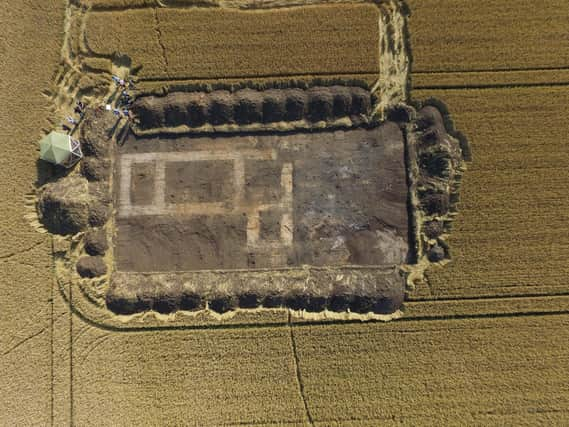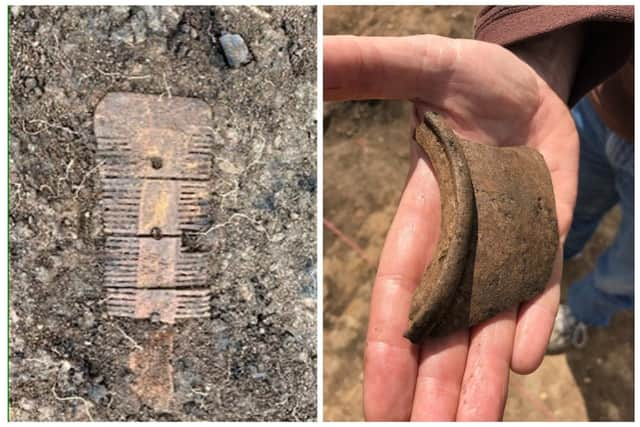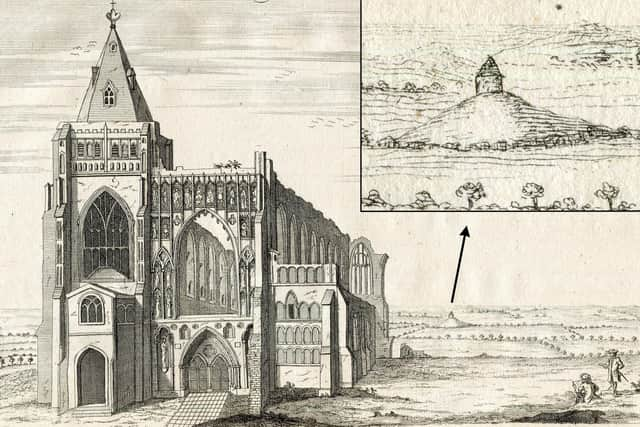Archaeologists unearth ‘previously unknown’ henge near Crowland


Archaeologists have announced they have unearthed the remains of a significant prehistoric monument at Crowland.
The find has been described as a “previously unknown Late Neolithic or early Bronze Age henge, a type of circular earthwork.”
Advertisement
Hide AdAdvertisement
Hide AdThe excavation team – which was made up of archaeologists from Newcastle University and experts from the University of Sheffield – made the startling discovery at Anchor Church Field, on the outskirts of town.


Dr Duncan Wright, Lecturer in Medieval Archaeology at Newcastle University, said he and his team were surprised by their excavations, as their efforts unearthed a much more complex and older history than expected.
While the henge itself dates to somewhere between 3,000BC and 1,600BC, evidence shows the site was subsequently used by Anglo-Saxons.
“We know that many prehistoric monuments were reused by the Anglo-Saxons, but to find a henge – especially one that was previously unknown – occupied in this way is really quite rare,” Dr Wright said.
Advertisement
Hide AdAdvertisement
Hide AdAn archaeological dig led by Dr Wright in 2021 had previously discovered Roman and Anglo Saxon finds on the same site.


The find is thought to be one of the largest prehistoric monuments ever discovered in eastern England.
Crowland was a sacred space
Because of its size and location, the henge would have occupied a prominent place in the region during the Bronze Age, and is likely to have been a major site for ceremonial activity.
It is important to note that – at the time of its use by early peoples – Crowland would have been a peninsula surrounded on three sides by water and marshes.
Advertisement
Hide AdAdvertisement
Hide AdThe henge would have been set on a distinctive and highly visible point projecting out into the Fens.
Dr Wright and his colleagues had initially been undertaking excavations in the area to learn more about the town’s links to St Guthlac: the famed soldier-turned-hermit who went to live in isolation on the ‘island’ of Crowland following an epiphanic conversion during the late seventh century.
Crowland Abbey, the town’s most iconic landmark, was set up and dedicated to St Guthlac in the 10th century.
Dr Wright believes that, while the henge would have been deserted for many centuries, its substantial prehistoric earthworks would ensure it remained an area of local significance well into the medieval period.
Advertisement
Hide AdAdvertisement
Hide AdRather tantalisingly, this means that the henge – which would have been reoccupied and used by the Anglo-Saxons during Guthlac’s lifetime – may well have been a favoured haunt of Guthlac himself.
“Although the Anglo-Saxon objects we found cannot be linked with Guthlac with any certainty, the use of the site around this time and later in the medieval period adds weight to the idea that Crowland was a sacred space at different times over millennia,” Dr Wright noted.
The excavation found a range of artefacts which provide invaluable insight into how the henge was being used during the Anglo-Saxon period.
Pottery, two bone combs, and fragments of glass from a high-status drinking vessel are among the most curious items that have been unearthed - so far.
The remains of a 12th-century hall and chapel – built by the Abbots of Crowland to venerate the hermits housed here – have also been discovered.